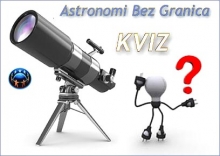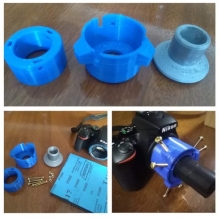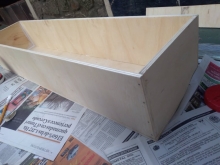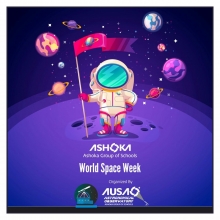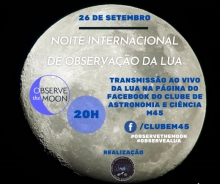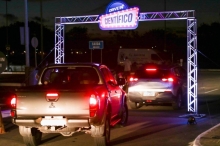Tom Gordon
Australia is a user of space. We consume it. We've done so for a very long time and we are very good at it. There are some people (myself included) that really think Australia should take a few steps beyond this relationship we have with space, the international space industry and space based technologies. We have a lot people working on space in Australia and we are renowned worldwide for our contributions and ingenuity.
This blog post is what I think an Australian space plan should look like.
This plan has been developed to take the best ideas from the Australian Academy of Science (AAS) National Committee for Space Science (NCSS), who have studied it, and who know how best Australia can be a part of it.
The three main ideas are:
- Adopt expert recommendations of the Decadal Space Plan from the National Committee for Space Science.
- Create an Australian Space Agency, ASTRA
- The Woomera launch facility
1. The Decadal Plan
The plan's vision is ‘Build Australia a long term, productive presence in Space via world-leading innovative space science and technology, strong education and outreach, and international collaborations’. The plan has 14 recommendations with five key imperatives in mind:
- Enable Australia to develop a strong space industry, and offset the risks of depending primarily on foreign space capabilities.
- Position Australians to solve major scientific and technological problems.
- Actively nurture, coordinate, and manage Australia’s investment in space science.
- Leverage increased public investment in space science.
- Provide government, community and business with the information needed to guide investment in space science and technology.
The plan document outlines the importance and current status of space science in Australia, and the specific scientific goals of the Australian space science community the next decade and build on our strengths.

With a very large group of experts in their field of astronomy and space science, and a sizeable group of experts from industry and business. I would like Australia to be a place that is known for not only its innovation with existing space based technologies but also an innovator in the field and a provider of world class facilities and programs.
The decadal plan seeks to establish government, commercial, industry and public collaborations to better develop and strengthen our niche technologies in order to be a contributor to the international space industry.
There's even a cheeky reference to creating Australia's own space agency (like NASA) in the plan. I'd like to go that extra step and I'll come to that now.
2. ASTRA: Australia’s Space Agency
ASTRA (Australian Space Technology & Research Agency) will serve many purposes including:
- Developing a strong, internationally recognised, Australian space capability.
- Create partnerships of Australian and international government and private stakeholders such as NASA, CSA, ESA,JAXA and SpaceX for example.
- Provide strong economic, educational, government, and strategic benefits to Australia.
- Provide structure for further research into space and space-based technologies.
Space provides exciting opportunities for humanity to advance itself. Technological development occurring in space research and related fields has already provided us with new technology in the fields of communication, transportation, energy, physics and biology as well as some amazing spin-offs from space-based technologies. Some of these technologies are used regularly by people all over the world.

I think that Australia has the potential to be a hub of space investment and technological development. To do so, however, would require Australia to make serious plans to invest in space research domestically and to attract investment from abroad. Establishing ASTRA will allow us to collaborate with the other major space agencies (and not major ones) around the world and start becoming a part if the conversation and benefit from those membership.
3. Woomera Launch Facility
Australia’s launch facility at Woomera in South Australia will once again become world leading, open to governments and commercial groups wanting to use the facility.
The conditions are perfect for this redevelopment (images of the phoenix rising out of the ashes are invoked here!) due to recent technological developments in the space industry such as reusable launch vehicles that would benefit greatly from a vast area to land.

The Woomera Launch facility is a largely flat, featureless, quiet electromagnetic and vast terrain of 124 000 km2 the largest landlocked range in the world, approximately the size of England, which allows easier access for test object recovery (an important safety feature for launch activities). Rainfall is rare, and the climate is generally warm and dry. The stable conditions virtually assure the ability to conduct year-round operations, with little downtime.
Although Woomera isn’t as close to the equator as some launch sites, (the issue being the further from the equator you are the more speed, or delta-v, you need to get to the right orbit) this is out weighed by the fact that a launch can almost be guaranteed and launch insurance considerations, time and costs will dramatically decrease.
The town of Woomera, meaning spear thrower, is perfect for redevelopment into a support community for the launch facility with heavy influence from Industry, instrumentation, education & research, technologies and services. You have heard of charter cities, well Woomera would be a perfect candidate for that!
Conclusions
Australia is currently a user of space and space based technologies. We have good relationships with countries that have big and exciting space plans and projects and we let them spend their money on those things. However, I think believe our chance and indeed our duty to become a formal member of that group has arrived. We too must spend our money, and of course reap the benefits of that investment into the future!
Technologies are moving so fast, and although we contribute to the efforts and have some world class researchers and industries here, there is a chance to gain some national benefits from actively contributing and supporting the international space industry with our resources, expertise, facilities and ingenuity.
With such an impressive number and quality of experts in their fields and in the space industry, it is imperative that we listen to them and trust their evidence backed advice and recommendations. This, together with some future thinking and planning, Australia’s place in the space industry will be worthwhile and beneficial.
###
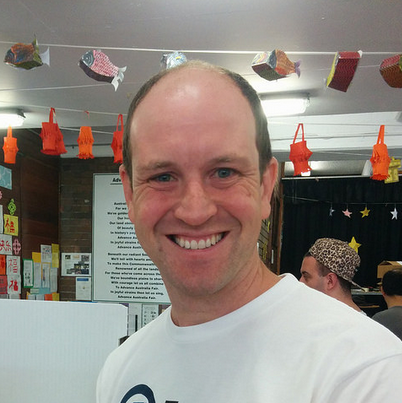
Tom Gordon is a science communicator at the School of Physics. My role is to provide and develop outreach programs to, mainly, High school students in order to assist them with their studies, provide mentors and information about University life and expectations. In addition, I run many other School and holiday programs such as Gifted and Talented workshops and I am the Chair of the School of Physics outreach committee.
My role also extends to media enquiries and publications, as well as in-reach to current university students as well as Science Teachers workshops and forums.
I did my degree in Astronomy and Astrophysics as well as a Graduate Diploma in Science Communication at the ANU, then a Masters Degree in Space Studies in France. After returning to Australia he was a High School teacher for 4 years in Sydney, and a stint at the National Measurement Institute as a legal metrology policy officer.
In my *spare* time I am on the executive of the Parents and Citizens committee and my daughters' school and I have also become involved and very interested in the Australian Political process by joining and being active in a minor political party.









